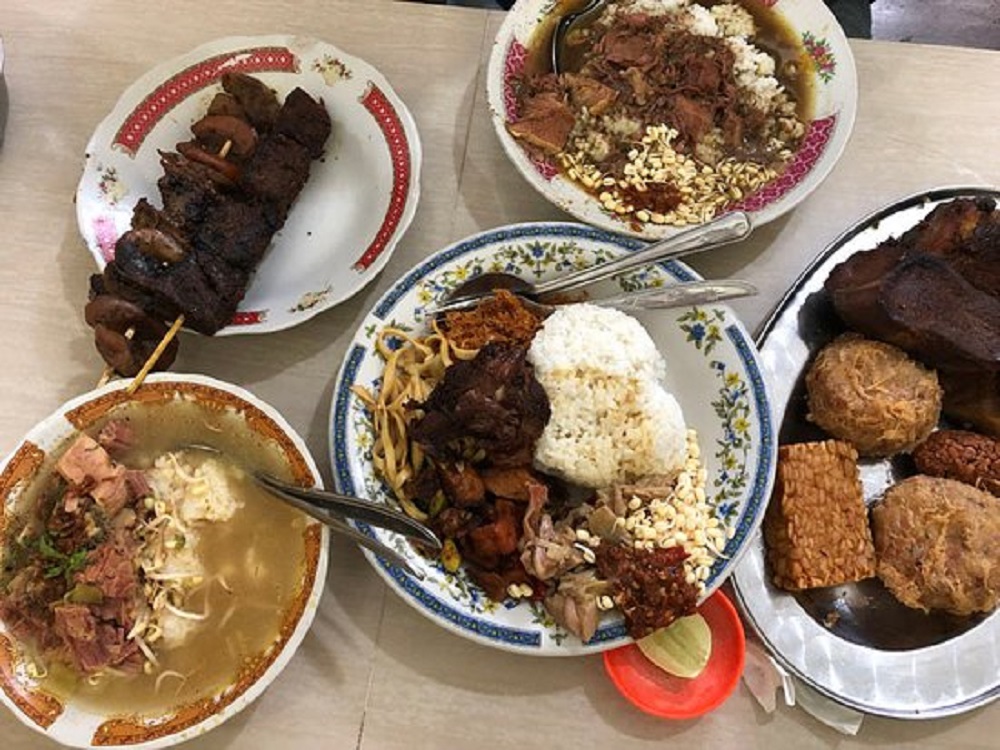- Get link
- X
- Other Apps
- Get link
- X
- Other Apps
Rawon, a traditional Indonesian black beef soup, is known for its deep, rich flavour and distinctive black colour, which comes from the unique ingredient keruak (black nut). Not only is the dish a staple in Javanese cuisine, it also holds great cultural significance.
In this article, we explore the origins of lawon, its
traditional role in Indonesian culture and its evolution over time.
Origins of Rawon
Rawon has its roots in East Java, Indonesia. The dish dates
back to the ancient Javanese kingdom and was often prepared as a special meal
for royal families and important ceremonies.
Its main ingredient, keluak, has been used in Indonesian cuisine for centuries and is prized for its unique flavor and nutritional benefits.
Key Historical Points:
- Ancient Javanese Kingdoms: Rawon was a dish served in the royal courts, symbolizing luxury and high status.
- Cultural Exchanges: Over time, Rawon has been influenced by various cultures, including Chinese and Indian, due to trade routes that passed through Indonesia.
Traditional Role of Rawon in Indonesian Culture
Rawon holds a special place in Indonesian culture, especially in the East Java, Central Java and Yogyakarta regions. It is more than just a meal. It is a cultural symbol and a traditional dish served on various important occasions.
Cultural Significance:
- Ceremonial Dish: Rawon is often prepared for traditional ceremonies, weddings, and family gatherings, symbolizing unity and prosperity.
- Festive Celebrations: During festive seasons and national holidays, Rawon is a popular dish, showcasing Indonesia's rich culinary heritage.
- Comfort Food: For many Indonesians, Rawon is a comfort food that evokes nostalgia and a sense of home.
Evolution of Rawon Over Time
Rawon has undergone many changes while still maintaining its core identity: as Indonesian cuisine has gained international acclaim, Rawon has been adapted and modernised.
Evolutionary Changes:
- Regional Variations: Different regions in Indonesia have their own versions of Rawon, incorporating local ingredients and cooking styles.
- Modern Interpretations: Contemporary chefs are reimagining Rawon, infusing it with new techniques and presenting it in innovative ways while maintaining its traditional essence.
- International Influence: With the global popularity of Indonesian cuisine, Rawon is now served in Indonesian restaurants worldwide, often adapted to suit international palates.
Conclusion
Rawon is more than just a traditional Indonesian soup; it is a dish with a rich history and cultural significance. From its origins in the ancient Javanese kingdom to its role in the modern culinary scene, rawon continues to be a popular dish representative of Indonesia's diverse culinary heritage.
Understanding the
history and cultural importance of rawon will help you appreciate not only the
unique taste of this iconic dish, but also
its deep cultural connections.
Digging into the
origins, traditional role and evolution of rawon will give you a greater
understanding of this exquisite dish and its place in Indonesian culture.




Comments
Post a Comment